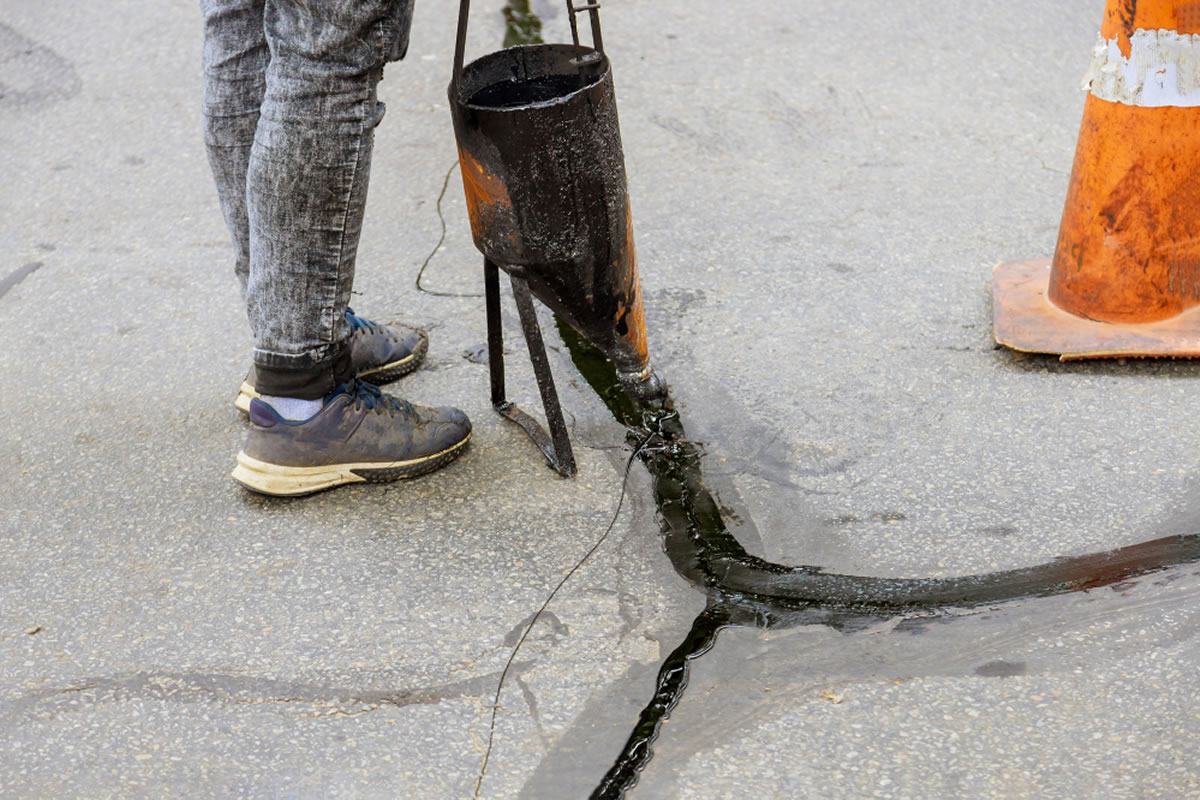
People outside the paving industry often have questions about sealcoating. So, our experts on sealcoating in Sanford answer some of the frequently asked questions about sealcoating to keep you in the know.
Sealcoating asphalt is a preventative maintenance procedure for your pavement. Your pavement can quickly deteriorate from exposure to the sun's UV rays, vehicle fluid leaks, heavy traffic, extreme temperatures, etc. During the sealcoating process, a protective coating of asphalt emulsion is sprayed onto existing asphalt to protect it from these dangerous elements, resulting in a protected and beautiful asphalt surface with an extended life expectancy.
Sealcoating is primarily a cosmetic and protective process. It is not meant to repair any structural issues in your pavement. If you have damages like cracks and potholes, you will need to fix them before contractors can complete the sealcoating process. Otherwise, you are wasting money sealcoating over damages that will reappear in no time.
Overall, experts recommend sealcoating maintenance within a year of initial installation and every two to three years after. This is a very general recommendation, and the actual need for sealcoating will depend on the surface's exposure to dangerous elements like UV rays, fluid leaks, heavy traffic, etc. Most residential driveways can go 3 to 4 years before sealcoating is needed, but the process should be completed when your asphalt starts looking ashy and dry to prevent future damages.
Sealcoating gives your pavement a dark, ebony color, much like how it looked when contractors first installed it. If you had to do any crack filling or patching to your pavement before sealcoating, you will still be able to identify these areas due to the different texture of the repair materials than the original asphalt. It will also provide a smoother surface for parking and driving.
Clean your driveway a couple of days before sealcoating is scheduled. Spraying it with a pressure washer is best, but a garden hose can work if you do not have access to a pressure washing machine. Sweep away any loose rocks, dirt, and debris to ensure the surface is ready for a fresh coat of sealant. Also, turn off your sprinkler system 24 hours before sealcoating to ensure that there is no additional moisture on your driveway that may impede the sealcoating process. Finally, let everyone know not to park on your driveway for 48 to 72 hours after sealcoating is completed to give it time for proper curing.
Sealcoating your driveway too often wastes your money. There is no need to sealcoat it yearly, especially with minimal traffic. The main consequence we see from sealcoating too often is that the paved surface can become incredibly slick when it is wet. This can lead to liability issues and fall risks, especially if your driveway is on a steep incline or hill.
We hope these answers to consumers' frequently asked questions about sealcoating in Sanford are helpful to you. So contact us today for a free quote, and let us keep your pavement looking and functioning at its best.